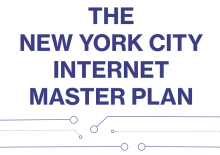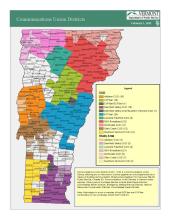NYC Internet Master Plan Offers Strategy for Metro Cities Confronting Broadband Monopolies
The pandemic exacerbated extreme economic, racial, and social disparities that have long characterized New York City neighborhoods. When the pandemic hit, the "City That Never Sleeps" experienced the worst single-year job decline since the 1930s, with communities of color bearing the brunt of the disease itself in addition to the rising levels of unemployment, lack of affordable housing, and food insecurity it brought on.
Aiming to alleviate these deeply-entrenched challenges, New York City Mayor Bill de Blasio formed the Taskforce on Racial Inclusion and Equity last April to survey community organizations in NYC districts most severely impacted by COVID-19. As that work got underway, taskforce co-chair Deputy Mayor Phil Thompson kept hearing a resounding call for access to the Internet. Three months into the pandemic, de Blasio reported that 18 percent of all New Yorkers, more than 1.5 million city residents, had neither a home or a mobile connection, mainly due to issues of affordability.
In response to the public outcry, Mayor de Blasio set to work enacting New York City’s Internet Master Plan, starting with a $157 million initiative which will direct public and private investment to fund broadband infrastructure and expand low-cost or no-cost Internet access to 600,00 New Yorkers, including 200,000 city residents living in public housing, within 18 months.



